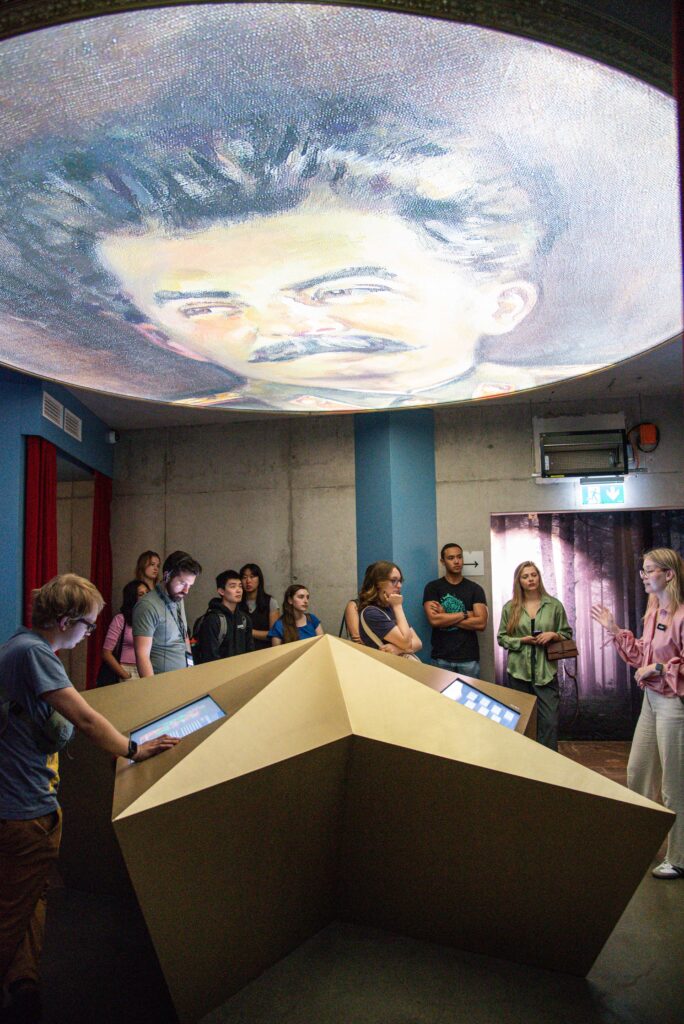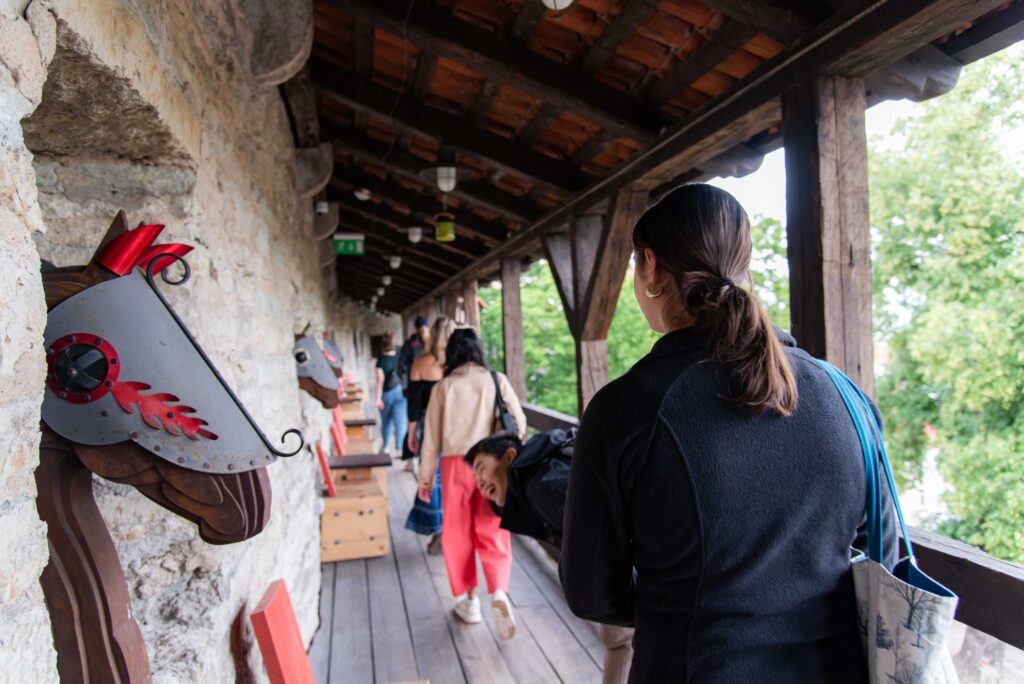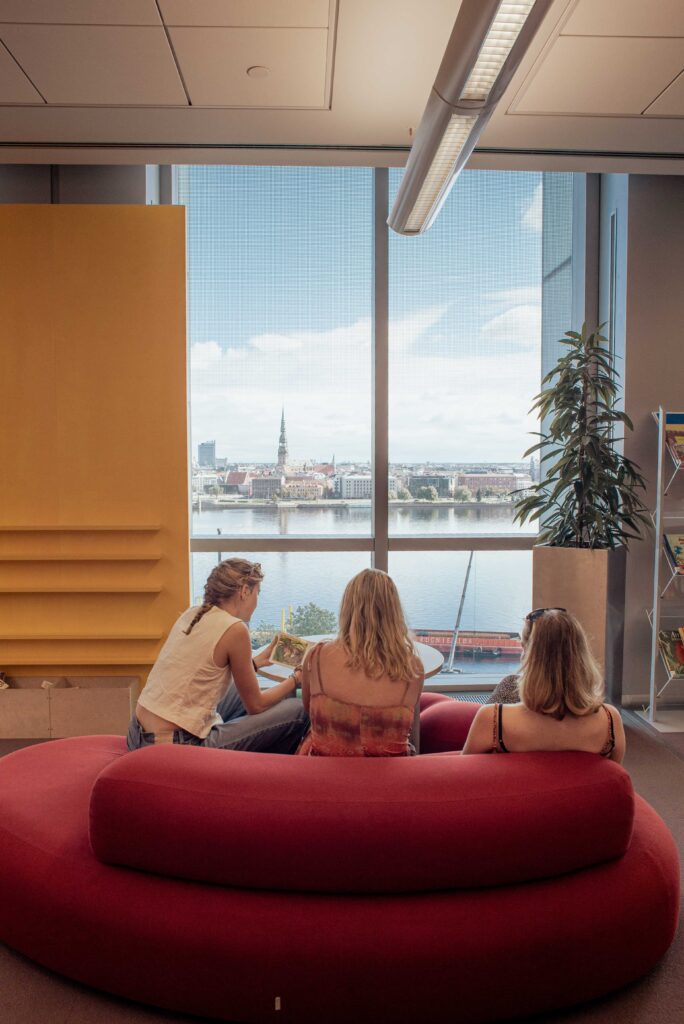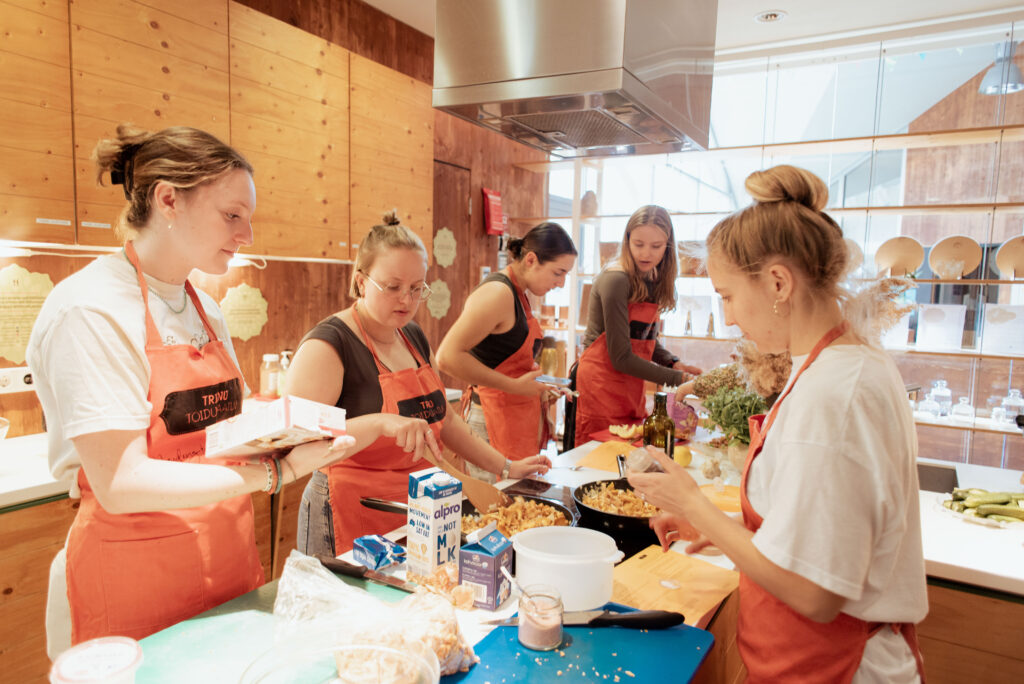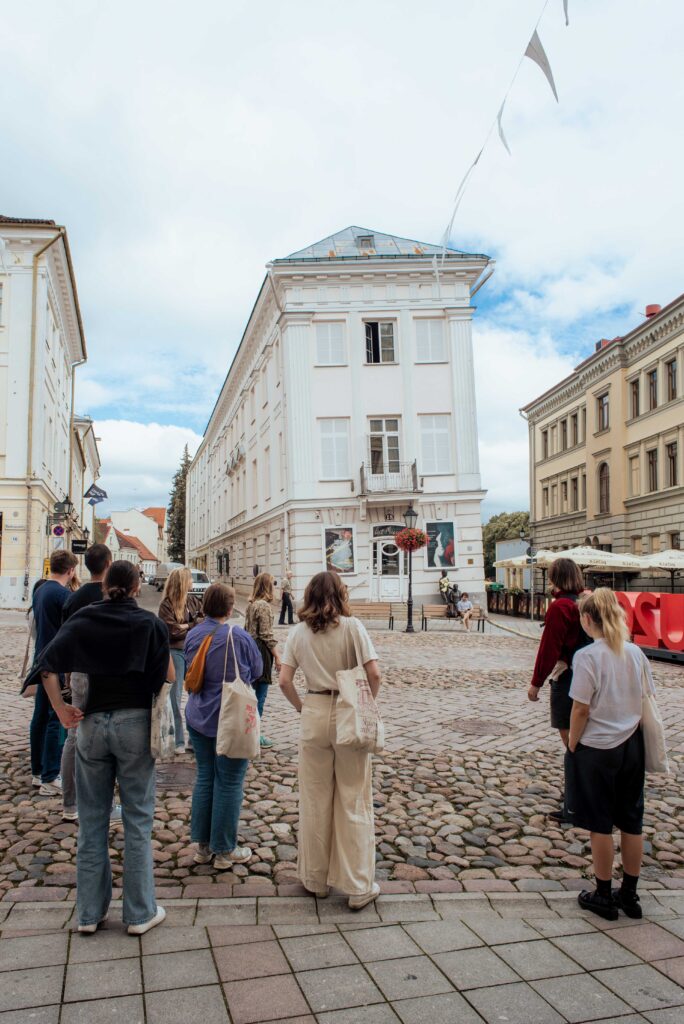Tallinn trip
4-6 July
Our internship with Vabamu familiarized us with Tallinn’s charming streets and vibrant culture before our planned trips began. However, these structured excursions gave us new insights and experiences, revealing layers of the city’s history and contemporary significance that we had yet to discover.
On our first day, the Stanford interns gathered with the interns from the Ministry of Foreign Affairs at Vabamu, Museum of Freedom and Occupations. This was our first time meeting on this side of the Atlantic, and we bonded over French press coffee and tales of our travels. After we shook off our jet lag with adequate caffeination, Agnes led us through Vabamu’s permanent exhibition. She guided us through Estonia’s troubled 20th century history, integrating personal stories of Estonians who lived through it. Particularly impactful was the discussion of the Baltic way, a human chain from Estonia to Lithuania formed by over 2 million people which protested the Molotov-Ribbentrop Pact. Estonians today still share stories of participating in this demonstration of Baltic solidarity. They speak to the powerful feeling of being a part of something bigger than yourself in the name of your country’s independence. For us visitors, stories about the Baltic Way put into perspective how Estonia’s independence movement remains at the forefront of Estonian collective memory and in a lot of ways it runs parallel to Ukraine’s resistance to Russia.
At the Ministry of Foreign affairs, we attended a presentation that centered around discussion of Estonia’s unwavering commitment to its allies, especially the United States and Ukraine. We were provided with a unique perspective on Estonia’s active role on the global stage, emphasizing the country’s dedication to democratic values and international cooperation.
We also had the privilege of touring the Stenbock House, the seat of the Government of Estonia and the office of the Prime Minister. The architecture of the building itself was awe-inspiring, blending expansive classical design with modern practicality. Walking through the halls of this vital institution, we saw important political artifacts like the Estonian Declaration of Independence and the Treaty of Tartu which gave us a tangible sense of Estonia’s political history. Passing by the Prime Minister’s office, we were guided through the set up for an upcoming diplomatic visit, giving us a sense of Estonia’s methods for modern governance.
Later on, we learned how the United States interacts with modern Estonian politics in a meeting with Michael Snyder from the U.S. Embassy’s Public Affairs Office. Snyder described the close ties between the United States and Estonia, and put an emphasis on America’s commitments to public diplomacy, cultural exchange, and shared democratic values in Estonia. As many of the interns are interested in a career in foreign service, meeting with Snyder was also an opportunity to get a sense of the field, from his stories of taking the eclectic foreign service exam to his typically packed daily work schedule to the joys and challenges of moving to a new country every few years.
Shortly following, we were provided a lunch of various kinds of kringel, a traditional Estonian sweet and/or savory bread. It was so delicious that we ate and left no crumbs! Nikolai from Vabamu then gave us a wonderful tour of Tallinn’s old town, sharing fascinating stories about the city’s past, pointing out important historical sites, and bringing us to beautiful lookout points that gave breathtaking views of the entire city.
On our last day, we trekked via ferry to Aegna Island, one of 2,300 Estonian islands in the Baltic Sea! Despite the pouring rain, our group embarked on a hike led by a local tour guide deeply familiar with the island’s flora and fauna. The inclement weather did little to dampen our spirits as we trekked through the lush forests, and we stopped occasionally to pick and eat the abundant wild strawberries and blueberries that our guide pointed out along the trails. Once the rain died down, we also got to feed some very eager sheep that were our friends as long as we had bread in our hands, but were not afraid to give a solid headbutt if you took too long retrieving another piece. In the end, it turns out that nothing bonds you better than getting drenched in the rain and getting headbutted by sheep together. The day was filled with never-ending laughter.

